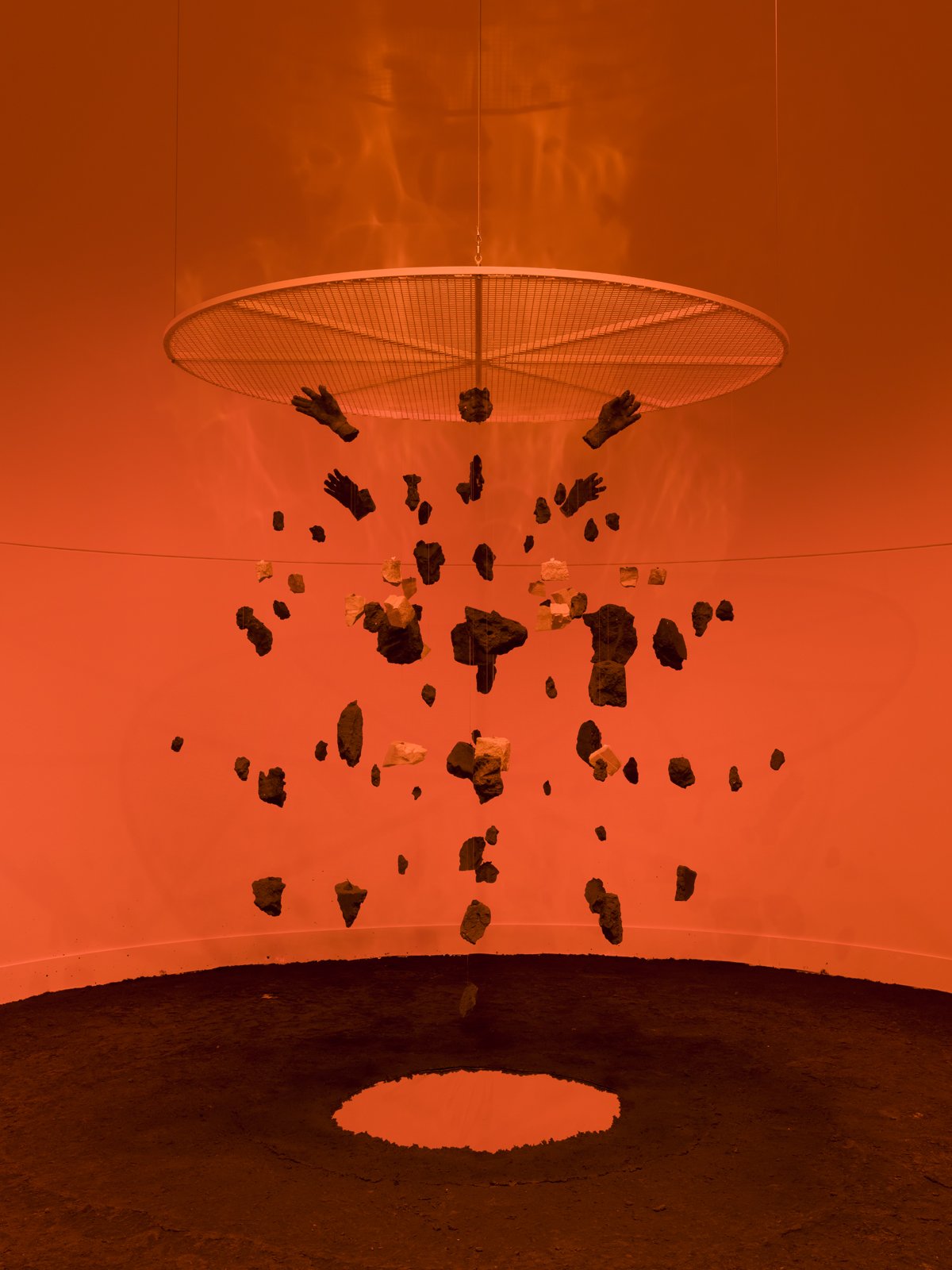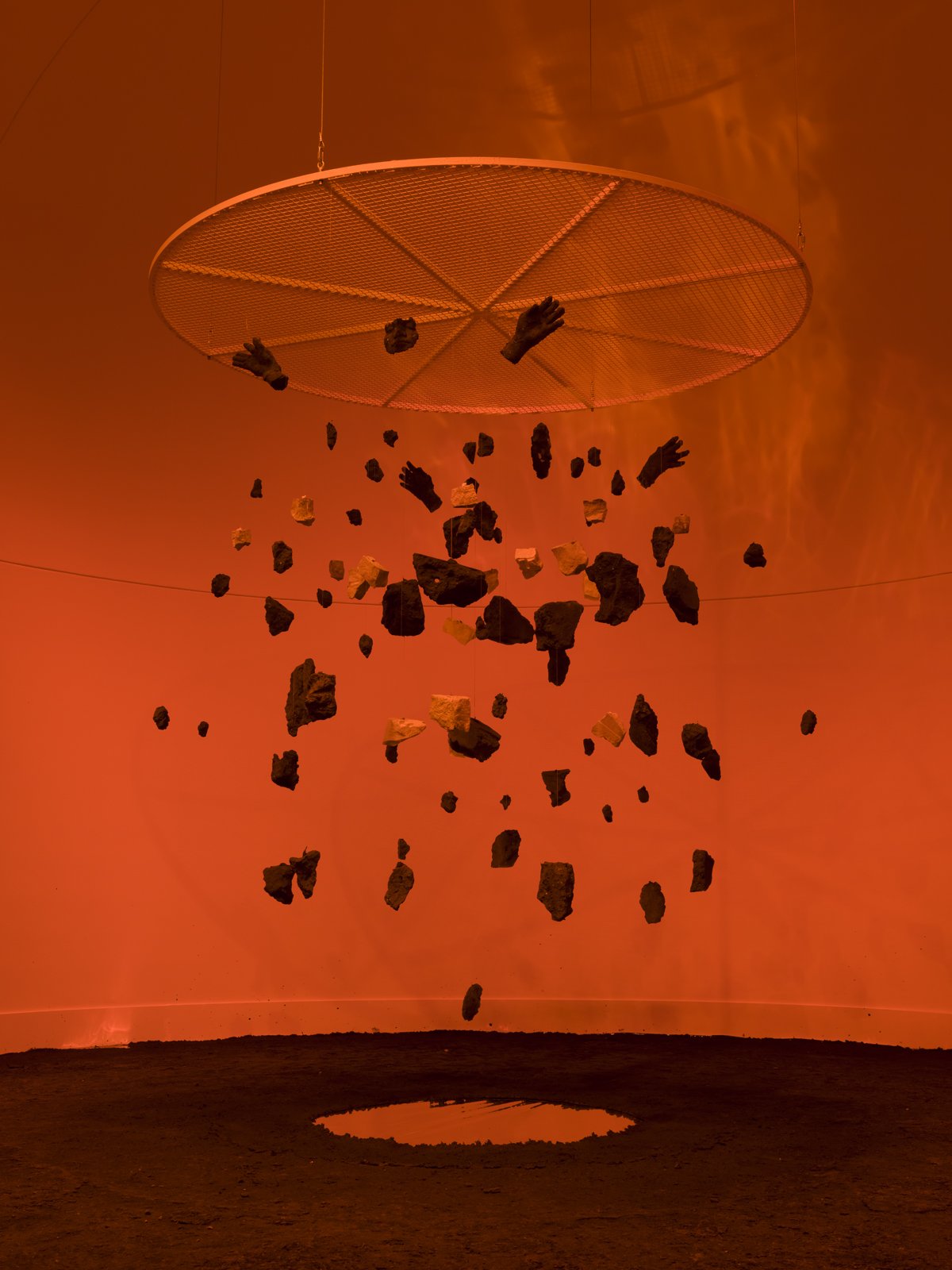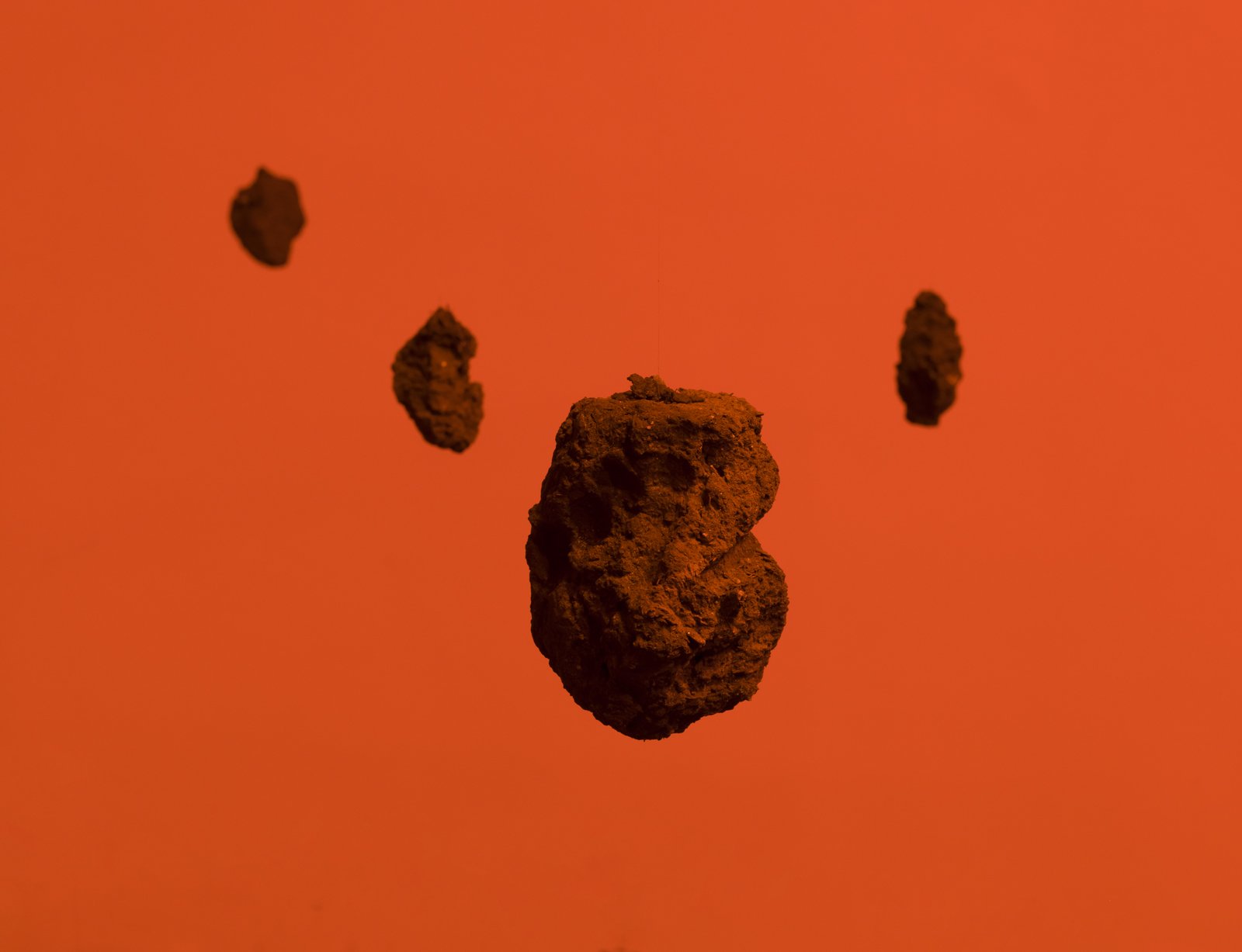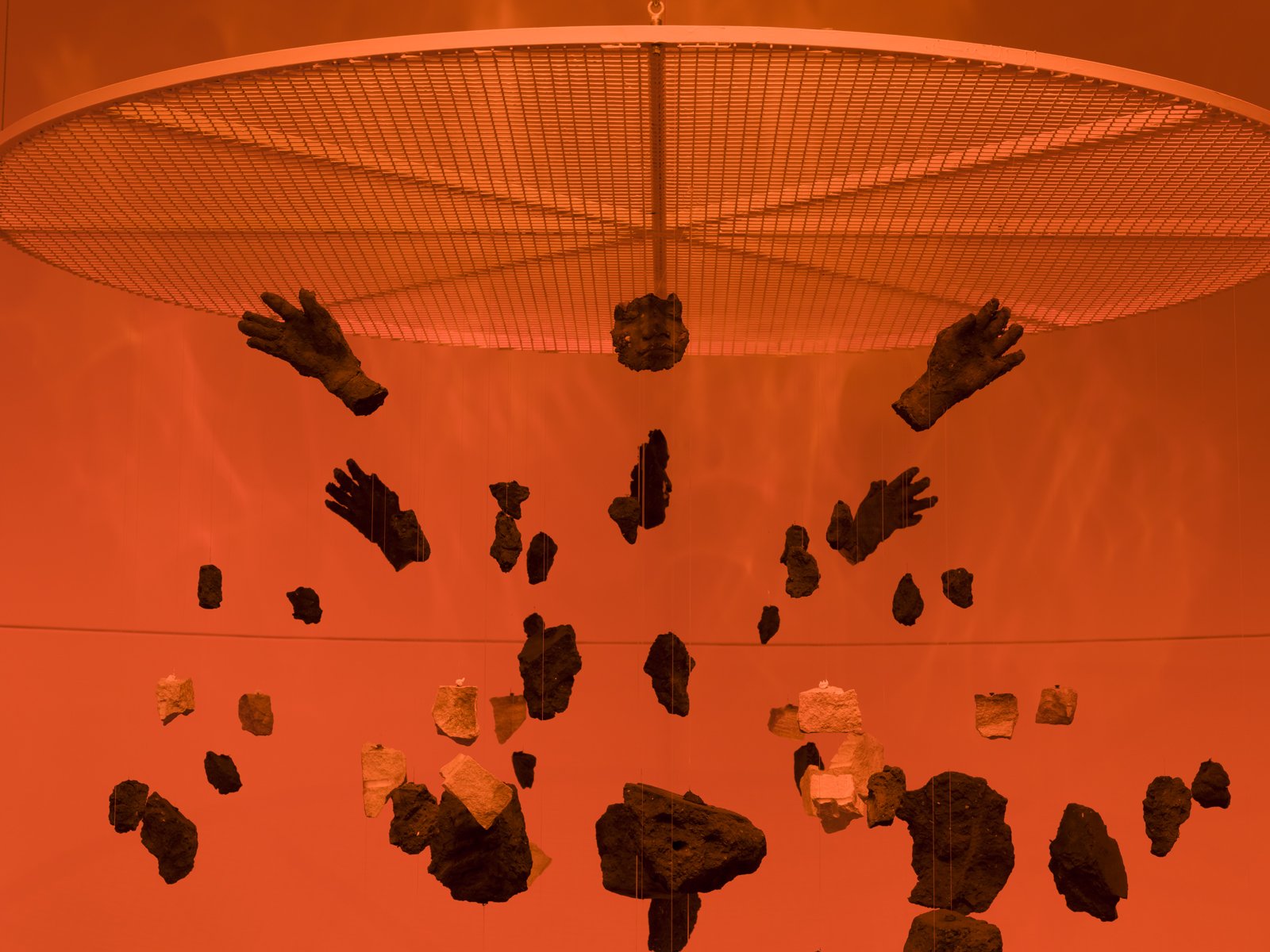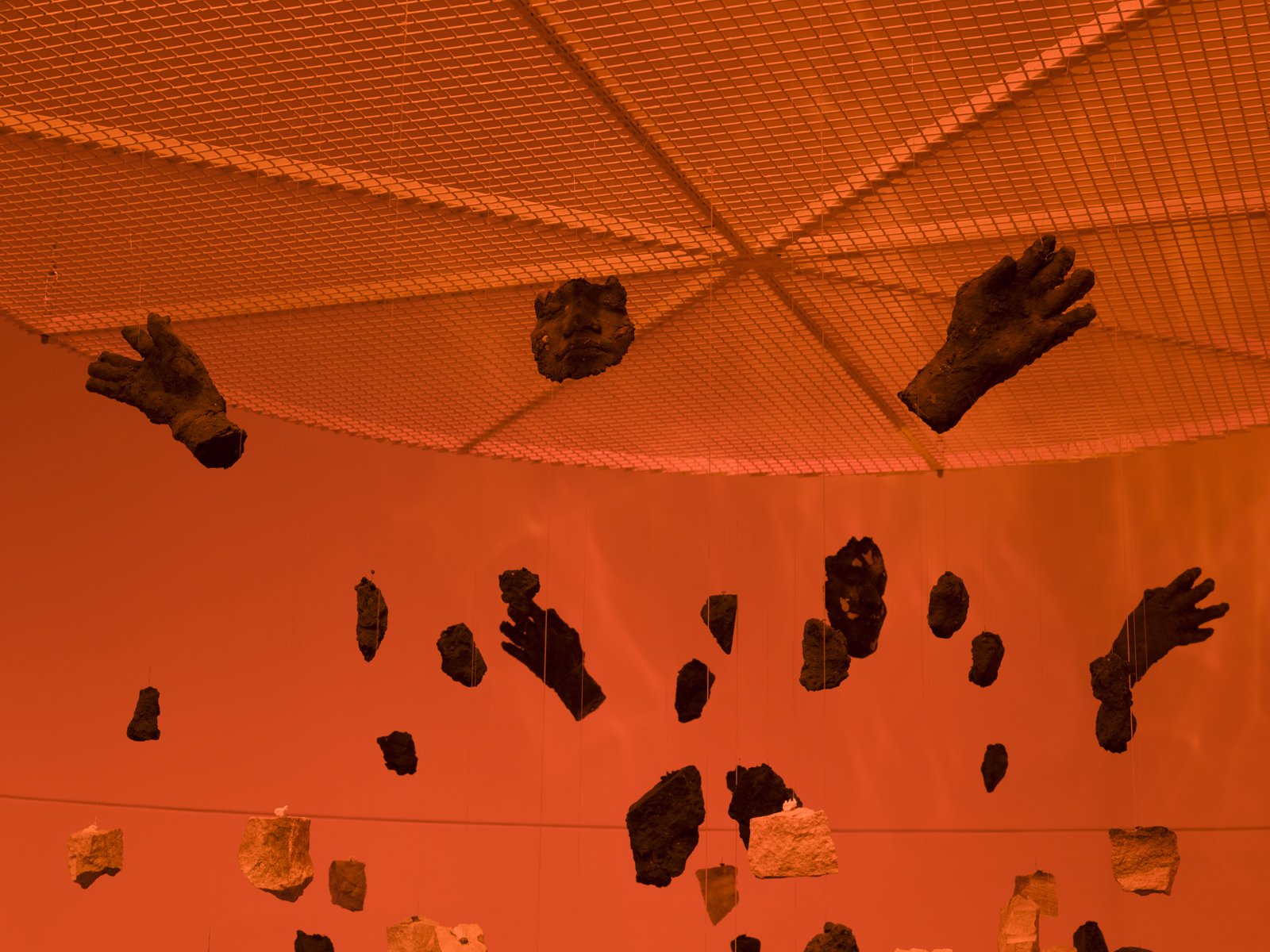Between Starshine and Clay, 2022
earth, sandstone, wire, hardware
120 x 96 x 96 inches
The Hammer Museum, Los Angeles, CA
Between Starshine and Clay is a constellation of architectural debris, stone, and earthen matter suspended in a moment of expansion and explosion. The fragments are gathered from the landscapes and ruins around which my practice unfolds. Drawing its title from a seminal Lucille Clifton poem, the installation is sculptural allegory for how the self is forged from an accumulation of the architectural, ancestral, earthen, and cultural remnants of the material world. Bathed in an orange-red luminescence, light is used as sculptural material to shape space, to shift the atmosphere. The monochrome hue evokes the glow of the sky during the crepuscular hour, the transitional zone between night and day, as well as the glow of molten rock in a state of transition between liquid and solid. Revealing traces of a body including a face and hands, the constellation combines abstract and figurative elements in a composition that suggests a form always in a process of un/becoming.
